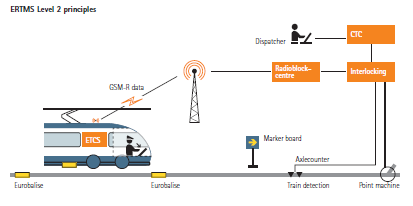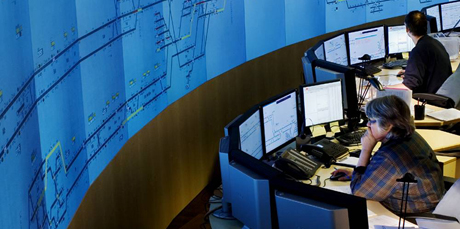Next: Bibliography


Goals
Over the next 10 years all Danish railway signalling systems are going to be completely replaced with modern, computer based railway control systems based on the European standard ERTMS/ETCS. The purpose of these systems is to control the railway traffic such that unsafe situations, like train collisions, are avoided. Functional correctness of these new systems is one of the key requisites for a reliable operation of the traffics and in particular for the safety of passengers. Work package 4.1 focuses on how domain-specific techniques and formal development and verification methods can be used for obtaining robust railway control software effectively and efficiently.
Case Study - the Danish Interlocking Systems
WP4.1 has proposed a methodology for automated verification of railway control systems and applied this methodology to a product line of the forthcoming Danish ERTMS level 2 compatible interlocking systems. This has resulted in a domain-specific language and a tool set for formally verifying these systems.
To verify an interlocking system controlling a railway network ![]() using these tools, first the configuration data (including network layouts for
using these tools, first the configuration data (including network layouts for ![]() and control tables) for the system is specified in the domain-specific language. Then the tools are used to check that the configuration data are well-formed and to automatically generate (1) a formal, behavioural model
and control tables) for the system is specified in the domain-specific language. Then the tools are used to check that the configuration data are well-formed and to automatically generate (1) a formal, behavioural model ![]() of the system and (2) formal, required safety properties. Finally a bounded model checker is used to automatically check that the model satisfies the safety properties.
of the system and (2) formal, required safety properties. Finally a bounded model checker is used to automatically check that the model satisfies the safety properties.
The tool set has successfully been applied to formally verify a number of railway networks, including the early deployment line between Roskilde and Næstved.
Some sample railway networks, their XML representation and behavioural models generated from these network representations can be found here: http://www.imm.dtu.dk/ aeha/RobustRailS/data/casestudy
For more information, see [1,2,3,4,5,6], and the following and popularized scientific articles:
Case Study - ETCS Ceiling Speed Monitor
See [7,8]. This work has been made in collaboration with the OpenETCS project.
Other Contributions
Development of compositional methods: see [9,10].
Novel concepts of distributed interlocking: see [11,12].
Comparison of formal verification methods for interlocking systems: see [13]. In collaboration with: Hoang Nga Nguyen and Markus Roggenbach.
Contributors to WP4.1

|
Some useful links: